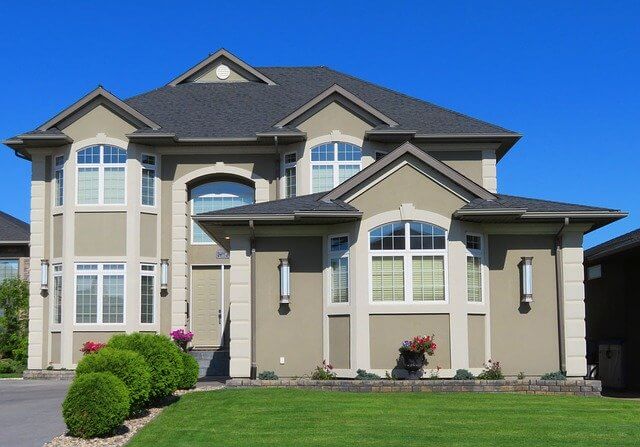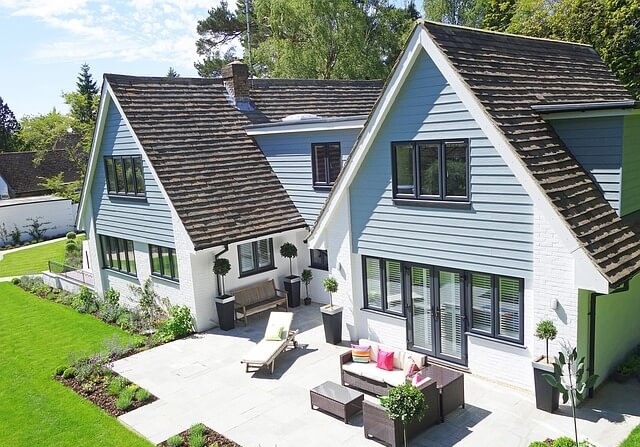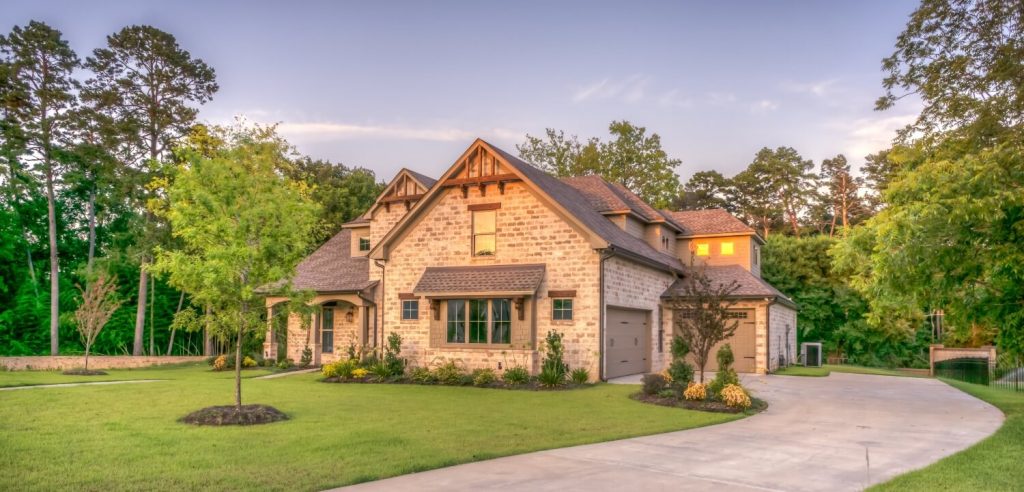Cap Rate Formula
The Cap Rate Formula divides the Net Operating Income (NOI) of a property by the current market value of the property.
- Cap Rate Formula = Net Operating Income / Property Value
What Is Net Operating Income?
The Net operating income (NOI) of the property is the income generated by the property, after subtracting all the expenses. Take note – It is best to work out the net operating income for the entire year rather than just one month. Importantly, you need to know the NOI, in order to calculate the capitalization rate. The explanation and example below should help clarify what we mean.
Net Operating Income = Annual Rental Income – Annual Operating Expenses
Net Operating Income Example
In the example below, we are going to demonstrate how to calculate net operating income for a property generating $2000 per month in rental income.
| Net Operating Income | Annual Rental Income | Annual Operating Expenses |
|---|---|---|
| Monthly Rent $2000 * 12 | Taxes: $1900 | |
| Insurance: $1650 | ||
| Property Maintenance: $2000 | ||
| Total Income: $24,000 | Total Expenses: $5600 | |
| Net Operating Income | $18,400 |
What Is The Current Market Value of the property?
The current market value is simply the price that you would expect to pay for the property, when applying the cap rate formula. Even though property prices are relatively stable, it makes sense to use up-to-date pricing data. You can get this from websites like Zillow , the New Silver ARV Calculator, or a local real estate agent.
To get an accurate estimate of the current market value, it is best to use comparable properties (comps). A comp is a similar property to the one that you are evaluating. Ideally, comps should be in close proximity to the target property, have similar square footage, and have a comparable number of bedrooms and bathrooms.
Importantly, you need to source the last known purchase price for each comparable property that you find. This article provides an in-depth breakdown of how to get comps on a house. You are effectively using the real estate market to predict the current value of a house.
Step-by-Step Cap Rate Calculation Example
To illustrate how quickly you can assess the profitability of two similar rental properties using the cap rate formula, we are now going to run through a simple example.
Quick Reminder: Cap Rate = Net Operating Income/Current Market Value
Property A

Property A Details:
- Net Operating Income: $18,000
- Current Market Value: $225,000
- Cap Rate Formula: $18,000/$225,000
- Cap Rate: 8%
Property B

Property B Details:
- Net Operating Income: $20,000
- Current Market Value: $307,700
- Cap Rate Formula: $20,000/$307,700
- Cap Rate: 6.5%
In this example, you can clearly see that Property A (8%) has a significantly higher cap rate than Property B (6.5%). All else being equal, it would make sense for a real estate investor to select property A in this case, provided their primary goal is to generate positive cash flow through rental income .
It is also worth noting that we have a very simple cap rate calculator that can help you work out the cap rate of other properties.
Cap Rate Comparison Table
To further illustrate the benefits of a higher cap rate (assuming everything else is equal), we have created a cap rate comparison table for a $200,000 property.
Cap Rate Comparison For $200,000 Home
| Net Operating Income | Property Value | Cap Rate |
|---|---|---|
| $4,000 | $200,000 | 2% |
| $6,000 | $200,000 | 3% |
| $8,000 | $200,000 | 4% |
| $10,000 | $200,000 | 5% |
| $12,000 | $200,000 | 6% |
| $14,000 | $200,000 | 7% |
| $16,000 | $200,000 | 8% |
| $18,000 | $200,000 | 9% |
| $20,000 | $200,000 | 10% |
As you can see, a higher cap rate means that you are generating a higher net income, relative to the value of the property. You could say that with a higher cap rate, the annual rental income covers a greater percentage of the property’s value. As a result, a higher cap rate means that the investment property will pay itself off faster.
How To Use Cap Rate To Workout Property Value
It is actually relatively simple to estimate property value using the cap rate formula. You simply need to swap the variables of the Cap rate Formula.
Current Market Value = Net Operating Income / Cap Rate
Example of How To Use Cap Rate To Determine Value
Property Details:
- Net Operating Income: $18,000
- Cap Rate: 8%
- Current Market Value = 18,000 / 0.08
- Current Market Value = $225,000
What Is A Good Cap Rate?
For most real estate investors, a good cap rate will sit somewhere in the region of 4-10%. As a basic rule of thumb, a low cap rate typically means that you are exposing yourself to less risk, while a high cap rate brings higher risk. A good cap rate should provide the investor with a good balance of risk and profitability, and that sweet spot tends to be in the region of 4-10%.
Final Thoughts
In this post, we have provided a simple summary of the Cap Rate Formula, together with some step-by-step examples to demonstrate exactly how to use the formula.
Our hope is that you now have a better understanding of what cap rate is and how to compare two or more real estate investment properties using this relatively straightforward calculation.
Frequently Asked Questions (FAQ)
Is Cap Rate the same as ROI?
No. Although the cap rate formula is great for comparing the profitability of similar rental properties, it is not exactly the same as ROI . Typically, ROI will factor in additional costs, like loan repayments for example, and ROI can also be used to easily compare different investment vehicles, like property flips, stocks and bonds.
Ultimately, Cap Rate is a simple formula which only requires you to factor in the rental income, property expenses and property value in order to work out how profitable the investment property is likely to be.
This article goes into more detail about the difference between Cap Rate vs ROI.
Is a higher cap rate better?
If you are looking at two similar properties, it’s fair to say that the property with the higher cap rate will be more lucrative for a rental property investor.
To further illustrate this point, imagine you are looking at two properties that are both valued at $200,000. They have the same number of rooms and a similar plot size. The one property is generating $10,000 in rental income per year. The other property is generating $20,000 in rental income per year? Which one would you choose? Naturally, most people would choose the property that generates a higher rental income, if the property value and expenses are relatively similar.
In other words, if all the other variables are very similar and you are able to conduct an apples-to-apples comparison, the property with the higher cap rate will be favoured by most rental property investors.
What does 6.0% cap rate mean?
What does 7.5% cap rate mean?
A 7.5% cap rate means the investment property will generate a net operating income which equates to 7.5% of the property’s value. For example:
- A $300,000 property with a 7.5% cap rate would generate a net operating income of $22,500
- A $500,000 property with a 7.5% cap rate would generate a net operating income of $37,500
What is a good cap rate in commercial real estate?
Truth be told, a good cap rate for commercial property depends on the location of the building, and the risk appetite of the real estate investor.
When comparing commercial real estate, it can be more difficult to find comparable properties. In this case, it is best to look for commercial property that falls into the same class (ie multi-family, retail, offices etc), and then look at cap rates in the same region and even other regions. Your underlying goal should be to assess how well that property type performs in the same region and across regions. This will give you the best understanding of whether or not the cap rate is ‘good’ relative to similar commercial properties.
What expenses are included in the cap rate calculation?
Each operating expense listed below is included in the formula:
- Property tax
- Insurance
- Legal fees
- Maintenance costs
- Utilities
- Routine repairs
The following expenses are excluded when calculating cap rate
- Debt repayments
- Interest on loans
- Depreciation
How do you calculate a cap rate?
Take the net operating income of the property and divide it by property value. Expressed as a formula, cap rate = net operating income / property value



